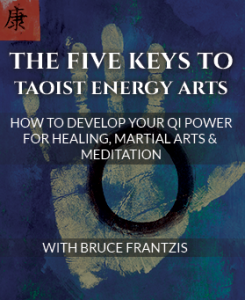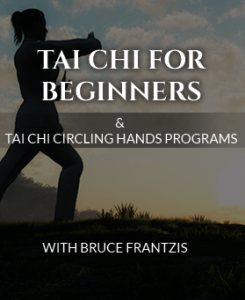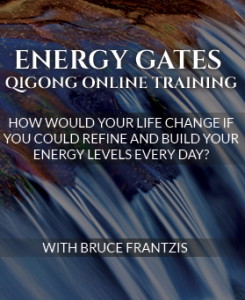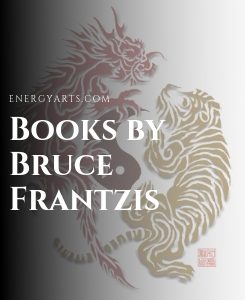Handed down for thousands of years, the ancient Chinese neigong (nei gung) tradition of chi cultivation provides a systematic method for transforming body power into one integrated, unified, and dynamic whole. Offering immense benefits for internal and external martial arts practitioners, neigong promises a body that can move better, faster, and with more strength and stamina.
The 16-part Internal Power System, described by Master B. K. Frantzis in his compendium of martial arts practices and techniques, The Power of Internal Martial Arts, introduces students to the sophisticated neigong system discovered and used by Taoists for several thousand years. Ultimately the source of chi (qi) power in the internal martial arts of bagua chang, tai chi chuan, and hsing-i chuan; of chi therapy and bodywork; and of Taoist meditation, neigong evolved from the Taoists’ meditative exploration of the underlying spiritual realities of the universe. Used by the Taoists to maintain superior health, for healing illness and to experience profound inner stillness, neigong became the root from which not only the Taoist, but other chi gung/qigong systems – Buddhist, Martial Arts, Medical and Confucian – developed their knowledge and techniques.
The 16-Part Neigong Internal Power System
Below are listed the basic components of the Taoist neigong:
1. Breathing methods, in increasing complexity
2. Feeling, moving, transforming and transmuting internal energies along the energy channels of the body
3. Precise body alignments
4. Dissolving physical, emotional and spiritual blockages
5. Moving energy through the body’s meridian channels and energy gates
6. Bending and stretching the body, inside out and outside in
7. Opening and closing all parts of the body’s tissues, joints and subtle energy anatomy
8. Manipulating the energy of the external aura
9. Making circles and spirals of energy inside the body, controlling the body’s spiraling energy currents, and moving chi in the body at will
10. Absorbing and projecting energy to and from the body
11. Controlling energies of the spine
12. Controlling the body’s left and right energy channels
13. Controlling the body’s central energy channel
14. Learn capabilities and uses of the body’s lower tantien
15. Learn capabilities and uses of the body’s upper and middle tantien
16. Connecting every part of the physical body into one unified energy
Developing High Performance Using Neigong
Neigong offers benefits for students and practitioners of internal, as well as external martial arts. The Chinese use the term nei jia to describe all the internal martial arts or Taoist chi practices as one family. Wai jia chuan expresses the concept of the external martial arts, such as gung fu, karate and judo. With the internal martial arts, movement begins from deep inside the body and works outward, with the object of fusing the inside and outside. External martial arts work the muscles and reflexes – the outer frame of the body. When neigong is incorporated, the student can also develop awareness of the deepest subsystems in the body and unify the inner and outer components into a powerful and cohesively functioning performance.
To use neigong for developing high performance in martial arts or competitive sports, the student engages in a two-part program: 1) focus on health and the healing of overt and hidden injuries, and 2) an accelerated level of commitment for high performance. It is essential that the training sequence is observed; any training method that can create real physical power and speed requires a healthy body.
The health-building phase of neigong clears physical problems that diminish the capacity for optimal performance. When practiced for health and fitness, neigong helps to develop superior balance and speed, while upgrading the internal organs, glands, and joints for increased vitality and mental alertness. Integrating the breathing and meditation components of neigong, the student develops a mind and central nervous system that is relaxed, calm and flexible.
Students who practice aikido or external martial arts, such as karate or tae kwon do, will benefit from neigong’s highly systematic internal energy chi training, especially in the area of health. As the body becomes healthier, it naturally performs better.
Once the body’s health is upgraded, the student has a clear awareness and control of chi in the body and energetic systems and has absorbed into his or her body an understanding of the internal work necessary to master the chosen martial art. Subsequently, the student progresses in the movement and fighting applications of the martial arts style, incorporating the newly-acquired neigong skills into all physical movements. Once the student’s body has absorbed a basic ability to fuse the internal energy work with the physical movements, the student focuses on maximizing his or her internal power with progressively more advanced training stages, both in solo martial art form work and in combat training with opponents.
Obtaining Internal Power
“Knowledge of the existence of a precious thing is a far cry from acquiring it.” – B.K. Frantzis
In presenting information on neigong in a coherent manner, Frantzis hopes it will continue to benefit humans as it has for millennia. It is his objective that these valuable tools will help raise the awareness level of internal arts and, when used appropriately by motivated, creative and intelligent people, will increase the awareness and quality of life for present and future generations.
Energetic practices to develop the full range of neigong form the basis of a carefully designed, six-part chi gung/qigong program taught by Frantzis throughout the United States and Europe. These courses provide a complete neigong regimen, combining the energy work of Oriental medicine, Taoist meditation and physical movement.
For students who desire intensive training in a retreat setting, Frantzis offers the six courses on a rotating basis each summer in California. The courses include: Dragon and Tiger Chi Gung/Qigong, Opening the Energy Gates of Your Body, The Marriage of Heaven and Earth, Spinal Chi Gung/Qigong: Bend the Bow and Shoot the Arrow, Spiraling Energy Body, and Gods Playing in the Clouds
Ibbie White is a freelance writer in Mill Valley, CA, and is a student of chi gung/qigong, tai chi, and ba gua chang.






I am wondering if you can be of assistance. My acupuncturist suggested that I explore Qi Gong and Nei Kung. I have polycystic kidney disease eGFR 26. I am curious if you have worked with people with this illness or if you know of practices that might be effective. I am 68 years old and have practiced Buddhist meditations for the past 40 years. I don’t know if you need this information, but to let you know that I have had an ongoing interest in mind/body disciplines for many years, I have practiced martial arts in the past–tai chi, aikido, and Shaolin Khenpo. I would like to preclude the possibility of dialysis and/or a kidney transplant in the next 2-5 years; if you have any suggestions, I would be open to considering them. I live in Boulder, Colorado.
Hi Darryl,
Glad to know you are local. The Tao Space is our local school in Longmont, Co, so you can contact the local teachers for more info (https://www.thetaospace.com/contact/). You’ll find quality teaching there, but please make sure your doctor approves taking on any new health regimen.
Best,